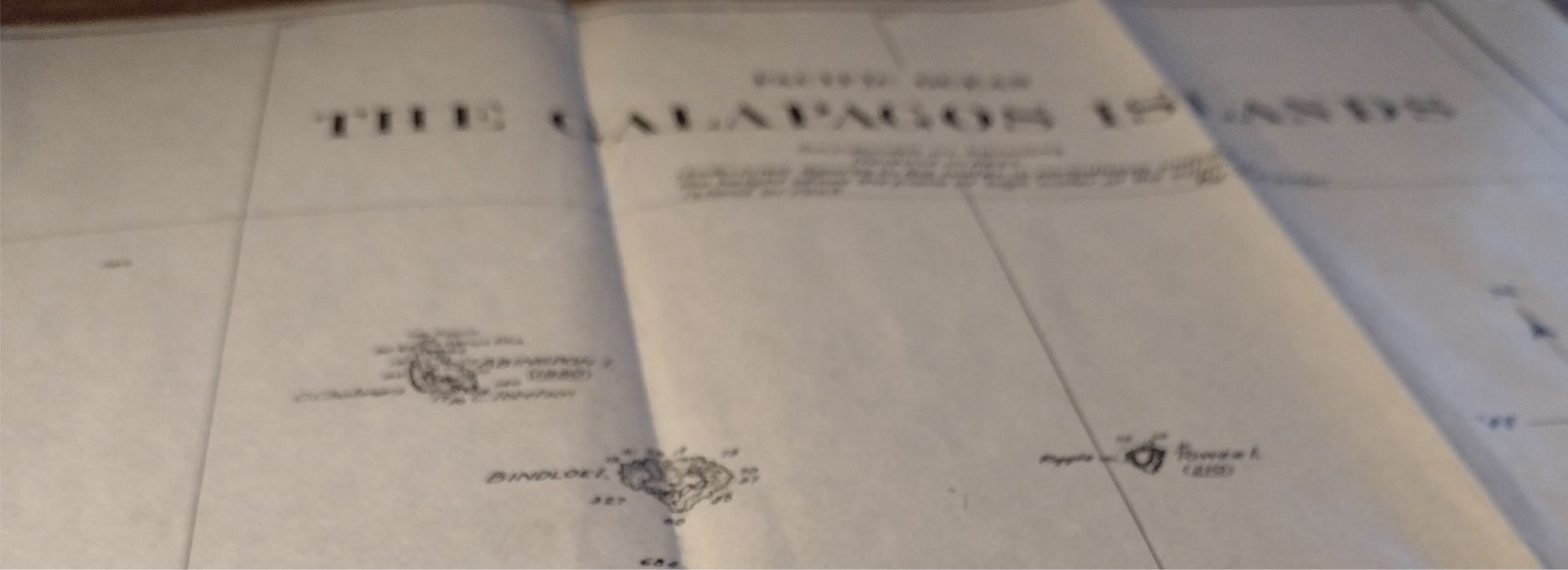A history of Galapagos in fifteen documents
History is conventionally defined as the period of time in which human societies have produced written texts. Arbitrary as it is, such a definition reflects an undeniable fact: through artifacts, manuscripts, prints, images, and many other documents (understood as "any material capable of containing and transmitting some type of information") it is possible to reconstruct the journey of human beings throughout the centuries. And while such documents definitively leave out a vast majority of events and characters, they provide at least a basic line that allows the construction of an elementary historical panorama.
From this perspective, the history of the Galapagos Islands begins in 1535, when the Spanish bishop Tomás de Berlanga, travelling from Panama to Ecuador, gave an account of their existence for the first time in a letter sent to King Charles I. From that moment on, they began to be mentioned in chronicles, newspapers, travel journals, naval logs, notebooks, correspondence, academic articles, novels, and countless other documents that, like a trail of crumbs, can be sought and recovered in order to (re)build a possible (always provisional, never definitive) history of the human presence in the archipelago.
In their pages, illustrations and charts, those materials show the progressive change in the gaze of the visitors who arrived in Galapagos, and how their experiences, discoveries, challenges, and problems fed each other. They also reflect the development of different international geo-political contexts, and how the islands were part of them. And they provide essential data to understand the emergence of different worldviews and scientific paradigms, as well as the evolution of different academic disciplines and methodologies.
A history of Galapagos in fifteen documents (subtitled From Ortelius' map to Darwin's journals) is a digital book edited by the CDF's Library, Archive & Museum area that collects and presents, pursuing a simple informative goal, a handful of textual materials that, from a heritage-related perspective, represent milestones in the Galapagoan history. They have been chosen, somewhat haphazardly, from a wide and rich documentary collection, as representative elements of an era — one going from the 16th century to the mid-19th century. This period allows avoiding the modern "explosion of information" era, when the amount of literature (international in general and on Galapagos in particular) exponentially multiplied. The chosen closing date for this work’s timeline is a year that has proven to be "emblematic" for the history of the islands.
The documents are presented in chronological order, according to their initial date of publication, even though they sometimes refer to events that took place a few years earlier. Each one includes its bibliographic reference and presents the cover (original, when possible) and a fragment where the Galapagos Islands are directly referred to. Last, they have been organized by century, and each group presents a brief initial note that puts the publications in context and highlights their importance.
As a complementary resource, each item has a link to download and view the full text, as part of Galapagueana's "Galapagos Historical Bibliography". Such texts, now part of the public domain and of the universal cultural and historical heritage, have been digitized by libraries and archives around the world and have generally been made available online by those entities or by platforms such as archive.org or Biodiversity Library. The versions to download have been uploaded to Galapagueana to guarantee continuity of access, while being accurately organized and described. Additionally, all the contents of this book are part of Galapagueana’s "Timeline": a chronology that forms the central axis of that digital project.
The goal of this work is to provide a basic and initial gateway to a rich and sometimes little-known literary and documentary production. Likewise, it aims to show, albeit in an elementary way, the numerous relationships between the documents, and between these and the historical events that they rescue from oblivion. Finally, it seeks to present the idea of social memory (the basis of history) as a dense fabric, made up of innumerable strands of different types, smaller or larger but always equally important.
[A copy of A history of Galapagos in fifteen documents can be downloaded from the section "Books".]
Civallero, Edgardo. A history of Galapagos in fifteen documents: From Ortelius' map to Darwin's journals. [Book]. Santa Cruz : CDF, 2022. 94 pp. : col. ill. : 21 x 21 cm. DDC 986. Well preserved.
Subject categories: Geography | History of Galapagos | History of science | Literature | Social sciences
Keywords: Bibliographies | Books | Culture | Expeditions | Manuscripts | Maps
Time framework: 2022
Text & picture: Edgardo Civallero (edgardo.civallero@fcdarwin.org.ec).
Publication date: 1 May 2022
Last update: 1 May 2022
